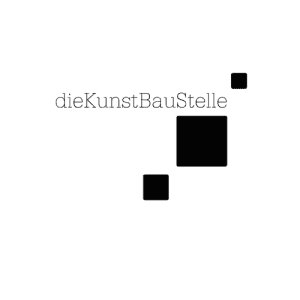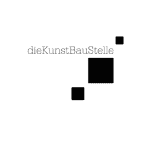“Freeze! Diagonal! Playing air guitar in slow motion!” The theater DJ can give free rein to his creativity at the theatrical mixing desk.
The group responds to the calls of the classmate who has stepped behind the table on which a whole buffet of theatrical resources, visualized on different coloured cards, is spread out.
Effective images are created through the combination of activities and various aesthetic means. We have already gotten to know and experimented with many of the means, such as freeze, mirroring, synchronicity and tempo changes, in the previous weeks.
The more familiar the various design options become, the greater the courage to use them in the scenes that small groups have developed on various topics.
Wouldn’t it be interesting if the two best friends mirrored their movements? This is tried out immediately and the scene is refined further and further with surprising results.
A workshop weekend like this is intense and you need energy to play theater.
The curtains are more than just a stage decoration. They also offer the actresses a cozy place to take a nap in between.
Or has someone here pupated to become a butterfly?
The second weekend with workshop and theater visit was also a complete success! Saturday was all about Shakespeare and the expressive form of movement and dance theater. Playing with speeds, levels, gestures, poses – these are important means of expressing a story without words but with the means of the body.
The stories that were the subject of this day were put down on paper by the English poet William Shakespeare almost 500 years ago. Romeo loves Juliet, Hamlet loves Ophelia, King Lear loves his daughters. And yet all these stories end with more than a few dead bodies and broken hearts. Why is love so often accompanied by hatred and jealousy, so that a happy ending often seems ever more distant? The team behind the production “For you my love” also asked themselves this question.
We watched the dance theater piece together at the Schauburg, the Theater der Jugend der Stadt München, and were impressed by the many different ideas that the three actors and two dancers surprised us with while telling the stories.
“Wege ins Theater”
The way to the second theater visit in Munich on January 21, 2017 was cold and led us over snow and ice. But we were still in a great mood.
Saturday was all about Shakespeare and the expressive form of movement and dance theater. Playing with speeds, levels, gestures, poses – these are important means of expressing a story without words but with the means of the body.
The stories that were the subject of this day were written down by the English poet William Shakespeare almost 500 years ago.
Romeo loves Juliet, Hamlet loves Ophelia, King Lear loves his daughters. And yet all these stories end with more than a few dead bodies and broken hearts. Why is love so often accompanied by hatred and jealousy, so that a happy ending often recedes further and further into the distance? The team behind the production “For you my love” also asked themselves this question.
We watched the dance play together at the Schauburg, the Theater der Jugend der Stadt München.
We were impressed by the many different ideas that the three actors and two dancers surprised us with when telling the stories.
“A wonderful day! It’s really fun and exciting!”
That was the opinion of Selina, 15, who has now attended a theater performance for the second time.
“We had a good team, a great idea and a lot of fun with our first story.” (Bader from Syria)
“It was nice to do something together with young Germans. I’ve always wanted to do that” (Adnan, Syria)
“It was great that we were all in a good mood. We laughed a lot and worked well together as a team.” (Marie, Germany)
“I really enjoyed taking the pictures. The team was very nice.” (Ali, Eritrea)
“I liked the fact that we took photos and videos and also played games.” (Mahmod, Syria)
“It was the first time in my life that I really took photos!” (Ziya Sami Haji, Iraq)
“The problem was not laughing during the shoot. Because we had so much fun!” (Majd)
“It was great that there were no reservations at all. We all got on really well!” (Natalie, Germany)
“I want to do a lot more, come up with more stories and also make videos.” (Emad)
“I would like to make a movie for Syria.” (Bader, Syria)
“It would be nice to make a movie or a story about how refugees live in Germany.” (Adnan, Syria)”
The alliance consists of dieKunstBauStelle e.V., Landratsamt Landsberg and Ignaz-Kögler-Gymnasium.
The TAMAM! project is supported by the MeinLand – Zeit für Zukunft program of the Turkish community in Germany as part of the federal program Kultur macht stark. Bündnisse für Bildung program of the Federal Ministry of Education and Research.
The project runs from December 2016 to December 2017.
In our current TAMAM project, which we are carrying out with young refugees and German pupils who accompany the refugees as mentors, we are introducing them to media technology. The focus is on video. As an introduction to the technology, photocomics are created as a “storyboard”, as required for a later video shoot. Around 32 refugees and around twelve pupils from Ignaz-Kögler-Gymnasium are working on this together.
The first task for our participants is to get together in groups to think about two places in Landsberg that could form a framework for a story or simply an action. This in turn is then thought up together and presented to everyone.
Photo shoot for storyboard
After an introduction on what to look out for when creating a storyboard and the best way to arrange images, we get straight to work. Equipped with cameras and smartphones, the respective groups head to their locations. The photo shoot can begin. Whether it’s the Mutterturm, the train station, the Lechwehr or the greengrocer’s store next door: they act, post, photograph, photograph and photograph again.
The very next day, the pictures of the individual groups are presented in the workshop and discussed together. Different approaches and qualities quickly became clear: some groups took few pictures, and the few they did take were all pretty good, while others took a lot of pictures, of which only a small selection was really usable. Together, we all tried to understand what the pictures were supposed to tell. Which was sometimes not so easy.
Not so easy
It quickly becomes clear that telling a simple story with pictures is not as easy as you might think. You have to think a lot beforehand, such as which image arrangement makes the most sense and ultimately leads to a coherent story. After all, a storyboard is more or less the preparation for a later film or video.
Fun in a team
The first two days were already great fun for all participants. The good cooperation was particularly appreciated: “We had a good team, a great idea and a lot of fun,” says Bader from Syria, for example. Adnan from Syria adds: “It was fun and interesting.” He particularly liked the cooperation between the young Germans and the refugees. Because “being together is important, it takes away the Germans’ shyness towards us foreigners,” he continues. It is also important for him to be able to learn German.
Reducing fear of contact
Natalie from Landsberg also found it great to work with the refugees. “Everything went really well, we all got on really well. There was no fear of contact at all – for example, I played a couple with Javad and we even held hands.” Natalie also enjoyed being creative and working on something together, coming up with a story together and then acting it out. “It was great fun and we laughed a lot together,” she says.
Producing moving images
Many of the refugees were taking photos for the first time, such as Ziya Sami Haji from Iraq. “It was a good day for me because I was able to take so many photos.” Ali from Eritrea also really enjoyed taking pictures and would love to shoot the same thing again as a video. Bestom from Eritrea would also like to make a movie, possibly about a new story that still needs to be made up. Adnan already has more concrete ideas: He would like to make a movie about how refugees live in Germany. Or a play, because he studied literature and worked as an actor in Syria.
Those who take part in this project become master builders, designers, artists and craftsmen themselves. For one week, the Landsberg cultural association “dieKunstBauStelle e.V.” is working on its ARCHITECTUS LUCIS project with Landsberg residents aged between eight and 99 as well as international helpers and speakers under the motto “We follow the work of Dominikus Zimmermann” to create objects, costumes and rooms from cardboard boxes in the old IKG gymnasium and experience the light art of the famous architect for themselves. Next Saturday, October 22nd, the big project closing event will take place from 3:00 pm.
Creative process
The whole week was dedicated to creation and creativity. “At the beginning, nobody really knew what the end result would be,” says Wolfgang Hauck, project initiator and chairman of “dieKunstBauStelle e.V.”. It was a creative process, thoughts were taken up, new ideas emerged, we were open to everything,” emphasizes Hauck.
Around 140 participants, including pupils from the secondary school, the IKG and the Montessori and Waldorf schools, have already contributed to the project. “In the afternoon and evening, there was a lot of support from refugees, artists and architects or simply people from Landsberg who just dropped by,” says Hauck.
Bringing light spaces to life
Ideas were first collected together. “The art of architecture is to create a space and bring it to life and make it accessible for living,” explains Hauck. “That’s initially what we did with the cardboard boxes – created spaces. the art begins where you deal with the available light of day and don’t just use electric light. That’s why openings and artistic cut-outs are worked into the cardboard rooms. This creates the light spaces. You have to imagine this principle in large dimensions – we have produced large” light space cubes “that can be moved around and combined.”
These large boxes, for example, were created with pupils from year 12 at the IKG, who are currently focusing on architecture in their art lessons. They were on site every morning for four days and were able to work intensively on the topic – the results are really impressive.
“It’s a great project,” says 17-year-old Jana, a pupil at the IKG. “I really like building something together with other people. What’s exciting about it is that, for me, cardboard boxes used to be just cardboard boxes. I would never have thought what you could build out of them, especially in this size.”
Other, mainly younger, schoolchildren also explored the topic of light design, albeit in a slightly different form. They covered windows with transparent paper or built cardboard figures in baroque poses based on the outlines of their own bodies. And finally, there are moving sculptures, modern angels and “flying boxes” – all of these elements are ultimately brought to life in the light room.
Like school – only ten times better
Eleven-year-old Matthias, a pupil at Landsberg secondary school, is delighted: “It’s like school, only ten times better.” His teacher Aslihan Özcan is also delighted: “It’s great that the pupils can be creative and express themselves. When they see the result on Saturday, they will feel even happier – because they were allowed to be part of this major project.”
“Our project is deliberately not a reconstruction of Dominikus Zimmermann’s life and work,” says Hauck. “We are not recreating, but following his work. And are trying to engage with his spirit, to internalize and trace his inspired artistic work.”
“Whether artist, architect, craftsman, student or pensioner: everyone is there and has the opportunity to empathize,” explains Hauck. It is very interesting to see: How does the architect work, how does the artist work? It is very important that the space and design interlock, otherwise it won’t work. The pure artist who paints a picture is free from these guidelines and can simply paint away. Here, on the other hand, there is a direct dialog with the world.
Big final event: watch, join in – and destroy
Everyone is working together towards the one big day – the final event on Saturday, where all the works will be presented in various forms.
This will begin from 15:00 to 16:00 with a parade of moving sculptures through Landsberg’s town center. From 16:00, the cardboard exhibition, party or performance – whatever you want to call this mixture – will be open in the old gymnasium of the IKG. Not only can and should you touch everything, but you can also open light windows, views and insights with the cutters or rearrange over one meter fifty large building blocks. The event will be opened with introductory words by Landsberg’s third mayor Axel Flörke (town of Landsberg) and district councillor Ulla Kurz (district). International guests will also be present.
Things finally get exciting at 10 p.m. – the gymnasium is locked and children are only allowed to attend if accompanied by their parents or guardians. Everything that has been created is destroyed again in a large, expressionist action. “That’s part of the concept and part of the event,” says Stegink. “All that remains are photos, videos and fond memories. This is about the baroque theme of becoming and passing away, nothing lasts forever.”
ARCHITECTUS LUCIS is funded by the Kulturfonds Bayern, the European Bavarian State Ministry of Science, Research and the Arts, the town of Landsberg am Lech, the district of Landsberg and the district of Upper Bavaria. The cardboard is provided by the company Redl GmbH and the scaffolding by the company Ratzka.
SCHEDULE
15.10. Kick-off meeting and information for all participants
16.10. Workshop start
17.10. Workshop
18.10. Workshop
19.10. Workshop
20.10. Workshop
21.10. Workshop
22.10. Performance, music and exhibition
23.10. Exhibition and dismantling
Depending on the participants (senior citizens, adults, young people, school groups and professions such as designers, artists, painters, photographers, craftsmen and …), the special contents of the workshops are put together.
LOCATION
Alte Turnhalle IGK (Ignaz-Kögler-Gymnasium)
Lechstraße 6, 86899 Landsberg am Lech
Gogle Maps – Turnhale IKG
INFO FOR PARTICIPANTS
Info sheet for participants
Please register!
REGISTER ONLINE!
Doodle list
A field report by Julia Mann, speaker
A project of the program “K-I-D-Z DaF-Doku-Theater” on behalf of the Goethe-Institut Amman
25. July 2016, Amman
Amman: For a week, I helped organize a workshop at a PASCH school in Amman under the direction of Wolfgang Hauck, one of the heads of the “K-I-D-Z DaF-Doku” program. There, the Goethe-Institut Amman organized a three-week summer course for young people and invited us. As an additional program, the regular lessons were to be supplemented with creative and activity-oriented offers for German lessons.
Of the 66 participants in total, a mixed group of 20 students who already had an advanced basic knowledge of German took part. Accordingly, the language level of the participants varied and ranged from A1.2 to A2. We therefore came up with creative techniques to integrate different language levels.
As a teacher of German as a foreign language, I have mainly worked with adults in Germany so far. This project was a new and exciting challenge for me. I had already worked with the workshop leader, Wolfgang Hauck, as an actress in the theater. This meant that I was able to provide qualified support to the students in the design of the workshop in the scenic work on the comic scenes, which I will go into later.
Each workshop day began with a warm-up with different objectives: Team building, language and expression training and coordination training. The respective linguistic topics of the previous day were playfully integrated into this. For example: the participants’ introductions were refined with movements and the new vocabulary was combined with voice training.
Thanks to our various methods from the fields of theater and art, we were able to design these warm-ups flexibly so that we could orient ourselves to the respective daily form of the target groups. The exercises we used were designed to loosen up and warm up the participants. Warming up – this is of course less necessary at 35 degrees, but still helpful in an air-conditioned room. We used classic running and movement games or concentration exercises for this. On the other hand, we also wanted to introduce new vocabulary for the participants to work with later. For example, we used counting games to consolidate the use of numbers or to playfully develop new vocabulary such as colors, nouns, etc.. New vocabulary was consolidated the next day through short repetition exercises. At the same time, we practiced the practical application of what we had learned during the warm-up by having the participants speak aloud in front of the group.
I considered this action-oriented approach to be extremely successful, as although the students had already made their first contact with the German language in class, their pronunciation and intonation skills were barely there due to the lack of practice. One of the aims was for each participant to be able to speak a few short sentences in confident and correct German loudly and clearly in front of the group at the end of the workshop.
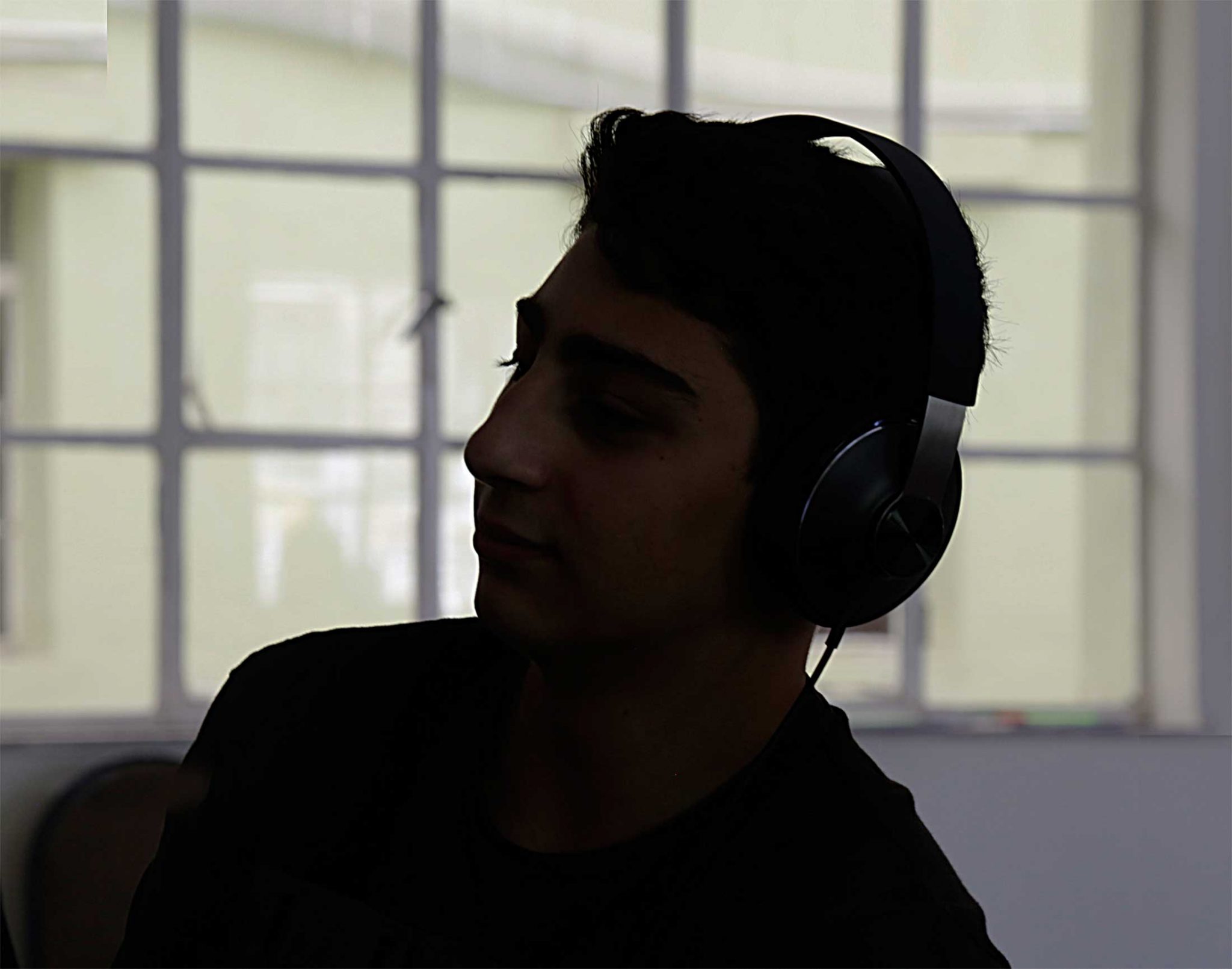
To train attention and listening comprehension, we introduced the interview as a conversation format. First, the students interviewed each other and made audio and video recordings. We gave them a few questions to introduce and train fixed structures. We made sure that the correct question structures with regard to verb tense, indirect question sentences, etc. were adhered to despite the students conducting the interviews independently. In the course of these interviews, the students’ answers led to various interest groups with which we were then able to plan the further projects. The aim of this was to take the pupils and their ideas and wishes into account as far as possible and to ensure action-oriented learning.
COMIC
One of the groups, mainly older students at A2 level, mentioned in these interviews that they would like to work as a doctor one day. We then took up this career aspiration as a core topic and drew up an interview guide for an interview with a Jordanian doctor. The prerequisite was that the doctor also spoke German. Thanks to the contacts of the Goethe-Institut, we were able to organize an interview with Dr. Rami Kilani, a specialist in gynaecology.
The list of questions was then worked out in detail in German. This list of questions was then practiced intensively in role plays and the use of audio and video techniques was also practiced.
INTERVIEW
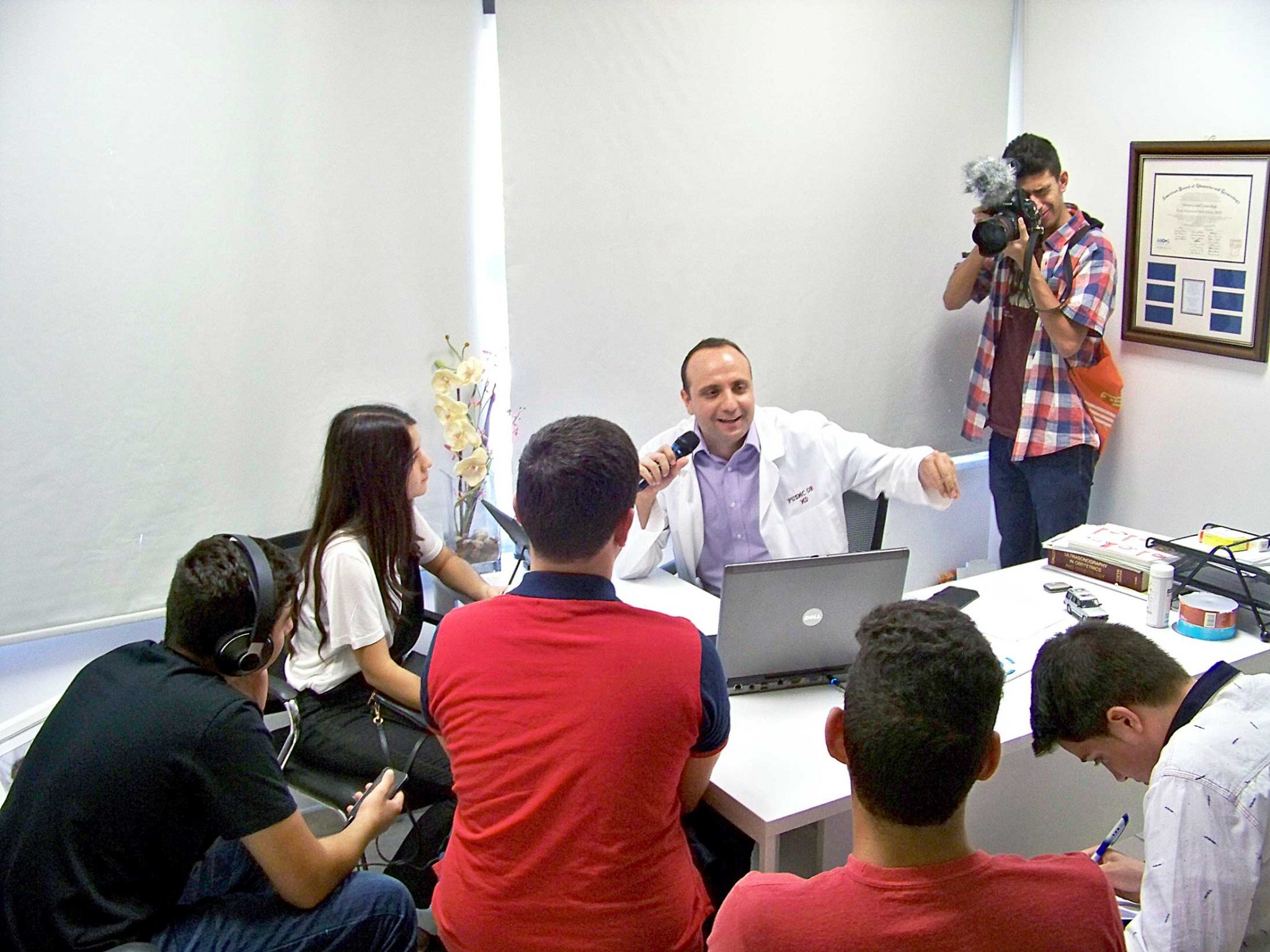
During the interview itself, the young people then took on the technical tasks in addition to the interview and recorded the doctor’s answers with photos, video and sound. This was later used to create a transcription, which the participants were also asked to write in German. This activity also allowed us to focus on listening comprehension and at the same time train written skills such as spelling, grammar and punctuation. The video material was later used to produce a movie as a making-of.
The young people were instructed in video editing by Wolfgang Hauck and were thus able to take over the rough cut and editing of the film independently. I was amazed at how interested the students were in the topic and how they were able to solve linguistically difficult situations on their own. The previously introduced vocabulary, which the participants were able to pick up relatively easily with the warm-up activities, was particularly helpful here. The students could and should also use the Internet as a research tool to obtain background information and thus had to practise using a wide variety of sources.
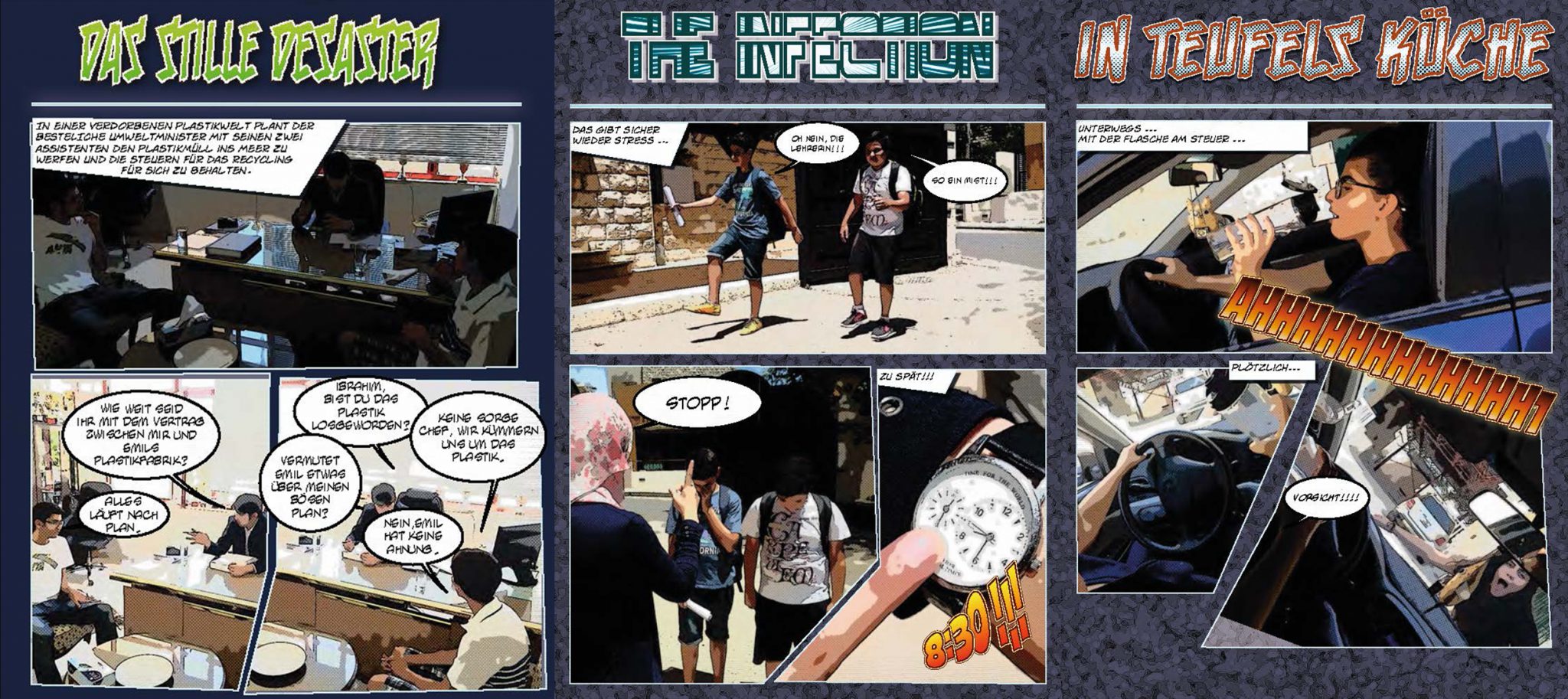
For the other participants, we chose an activity that would use less vocabulary to suit the lower language level, but would incorporate more interactive and social components in a playful way. We chose the “comic” format for this. Since, on the one hand, drawing skills could not be assumed and, on the other hand, the playful and dramaturgical part should be in the foreground, we chose comics with photography.
The pictures are converted into comic style and designed with speech bubbles using self-made photos and appropriate software. Groups of three to five participants are ideal for this implementation. We therefore formed three homogeneous groups in terms of age, interests and language level. The young people developed three different stories and storylines. The first step was to develop the storyboard in order to break down the story into individual images. The group of youngest pupils, aged thirteen, needed the most support in the language area, as the comics were to be published in German.
The photos were then taken. The pupils were asked to create the images required for their respective stories at school and take the photos themselves. The groups had tremendous fun with the scenic play because they had to put their ideas into practice. They were physically challenged, which provided variety after brainstorming and creating the storyboards.

The idea behind choosing comics as a medium was that they could be used at very different language levels, from individual words such as exclamations and simple main sentence structures in speech bubbles to more complicated content that was written down in entire texts. The young people were given help with more difficult structures such as subordinate clauses, perfect tenses, etc. We mainly checked spelling and grammar with regard to the result, but also explained orthographic and morphological features to the pupils. During this project work, we occasionally had to resort to explanations in English to explain the procedure, in particular how to use the software.
However, the young people picked up on this very quickly and were absolutely adept at using the program by the end. Last but not least, the idea of producing a comic was also suitable because after a week’s work the pupils also had something to hold in their hands. We printed out the results produced during this time and the pupils were thus able to present their classmates and parents with three “real” self-produced comics.
We repeatedly checked during the workshop that the participants were also using German among themselves, which was sometimes difficult as everyone had the same mother tongue and kept falling back on it in the discussions. We usually let this go for the time being, as it increased productivity and thus also the motivation of the participants. Nevertheless, we always made sure that certain fixed structures and vocabulary were used.
All in all, this workshop was a wonderful experience for me. This creative linguistic work with the young people was great fun. I was amazed at how motivated the young people were to use and expand their German language skills as much as possible. Particularly in the “interview” group, German language acquisition was given a high priority with regard to the topic of the future, career, studies after the interview with a German-speaking Jordanian doctor. Some expressed interest in an exchange program in Germany.
CONCLUSION
My experience is that the permeability and flexibility of this workshop and the consideration of both the interests and the language level of the participants led to an enormous boost in their motivation and willingness to get involved in the workshop.
We were also able to teach the students how to use the relevant media (photo, video, comic software) so that they can continue working on their ideas after the workshop. The feedback from the participants was very positive and over the course of the seven days I could already see an improvement in the language level, which I mainly attribute to the confidence the students gained in being able to use their acquired language skills.
LINKS
Goethe-Institut Amman, Jordan
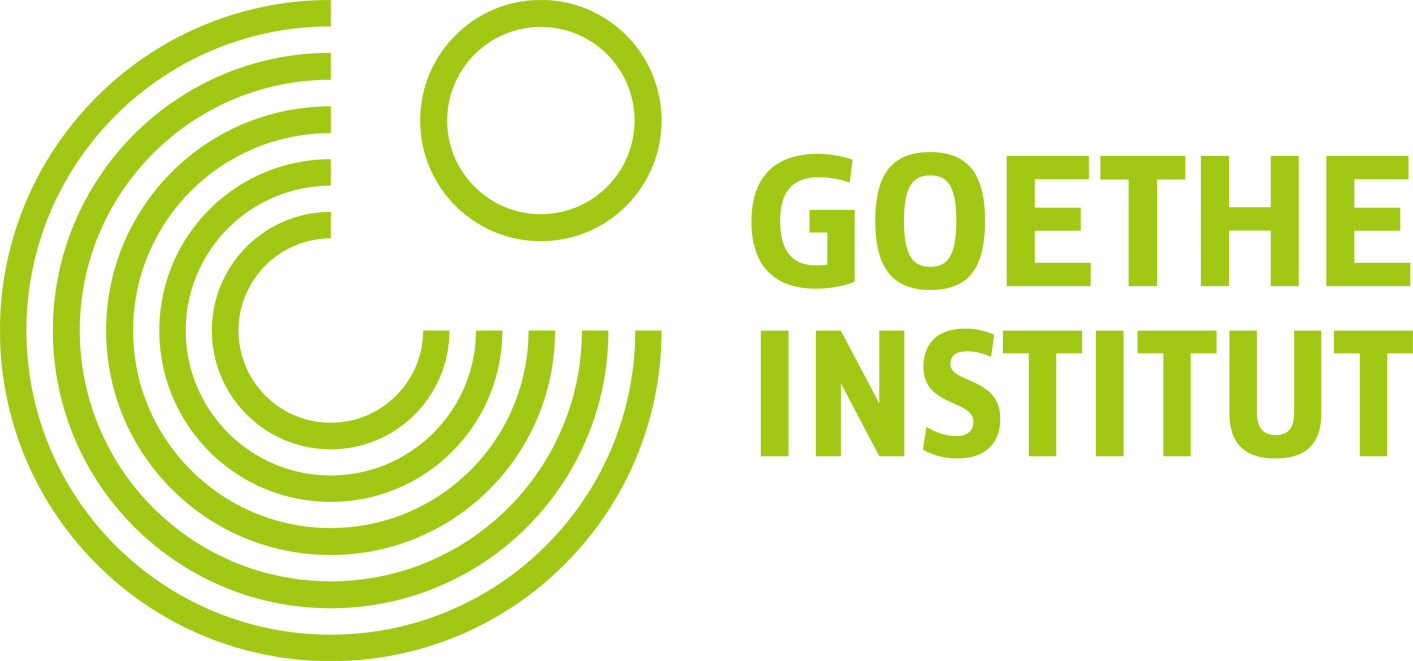
K-I-D-Z DaF Documentary Theater
./
